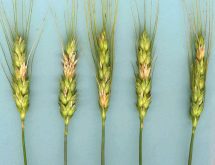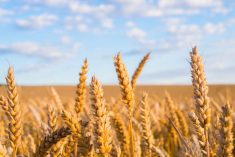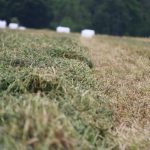Irecently received a call from a commodity organization that had a request from Japanese grain buyers. To sumarize, the grain industry is getting more questions from Japanese consumers who want to know what the carbon footprint is of the foods they are consuming. People worldwide are becoming more cognizant of global warming, climate change and the role carbon management/sequestration plays in the food production process. Evidently, Japanese consumers are striving to lessen their reliance on carbon-emitting production practices.
To illustrate how important this is becoming to Japanese consumers, new labels documenting a food product’s carbon footprint are appearing. The labels are very analogous to food nutrition labels that are required by most federal governments to more fully inform consumers of a product’s nutritional attributes. A can of Japanese Sapporro beer now contains a carbon label stating that 295 grams of carbon were released to produce the beer. It is interesting that the 123 grams of carbon needed to produce the aluminum container was not mentioned.
Read Also

Cooking cabbage deserves revival
Cabbage recipes don’t need to be boring. Rediscover the taste, diverse uses and local Prairie food traditions of this leafy green
The question posed to me was: What are the carbon footprints of grains produced in North Dakota? In addition, how can grain with a low carbon footprint be segregated and documented through the entire elevator, marketing and transportation system so Japanese consumers can be assured that the product label is accurate?
As this was relayed to me over the phone, my mind quickly raced to develop a response. My first thought was to reply that there is no way. My reasoning was that many North Dakota farmers are not aware of their carbon footprint. Usually, producers haul their production in bulk to an elevator that commingles their grain with everyone else’s in the area. The grain then is shipped overseas in a large boat. Documentation of any carbon benefit would be nearly impossible.
I knew my initial thought wasn’t what the caller or the Japanese consumer wanted to hear, so I quickly came up with a second possible response: Pay for it!
North Dakota farmers have had many opportunities to raise specialty crops and products in the past. In most cases, they readily embrace new markets, but usually find that sufficent profit doesn’t exist to make the new venture viable. Therefore, if the Japanese consumers really desire low-carbon grains in their food, they should start paying a premium for their purchased grains and North Dakota farmers will do their best to change production practices, collect the necessary information and then provide the needed documentation.
Again, I didn’t think this is exactly what the Japanese wanted. They, like most consumers, don’t want to pay more. The Japanese just desire a higher-quality product at the existing market price.
So, my actual response was to indicate that North Dakota farmers have considerable experience selling grains with different quality attributes, such as protein, variety and colour. Through time, markets provide enough of an incentive to induce behaviour change. Classic examples are protein and other milling attributes in wheat. Moreover, the grain industry has a vast infrastructure that is capable of segregating, transporting and preserving these characteristics through the marketing chain.
I suspect that carbon likely will be one more quality characteristic that all of us in the industry will start to track.













